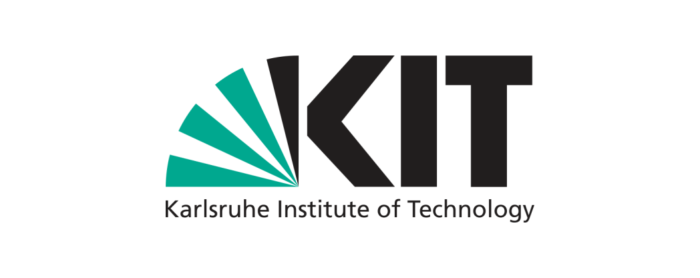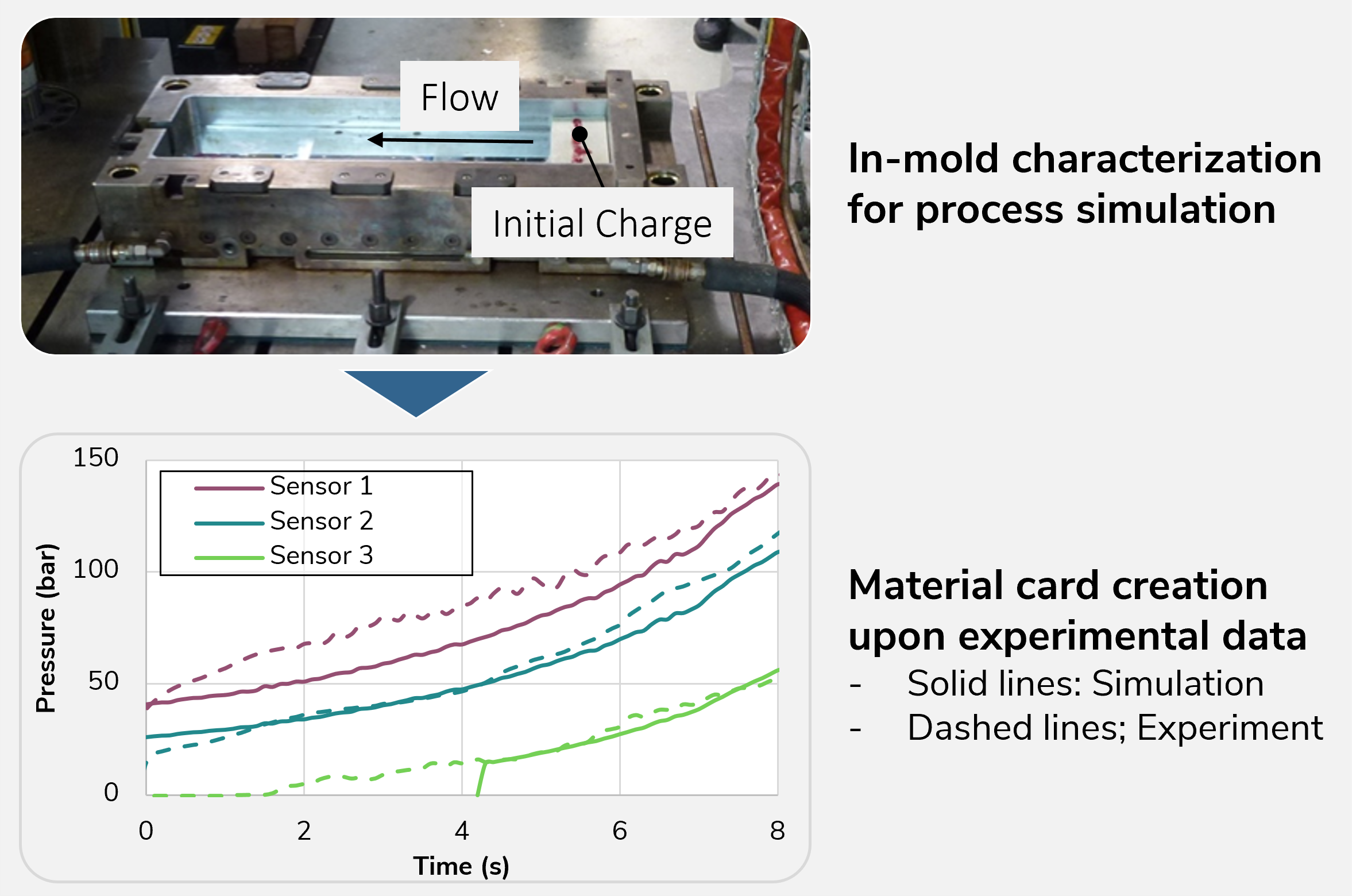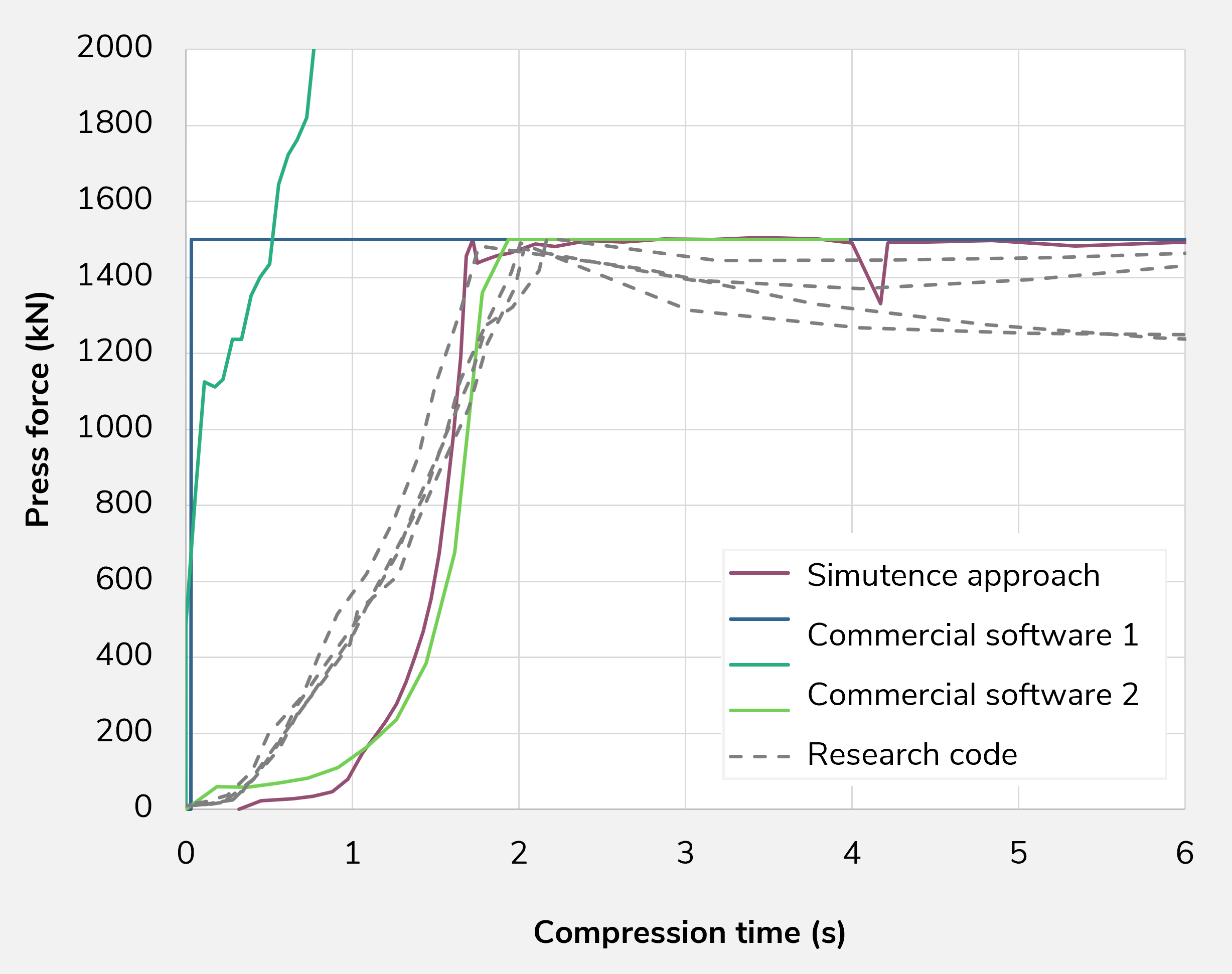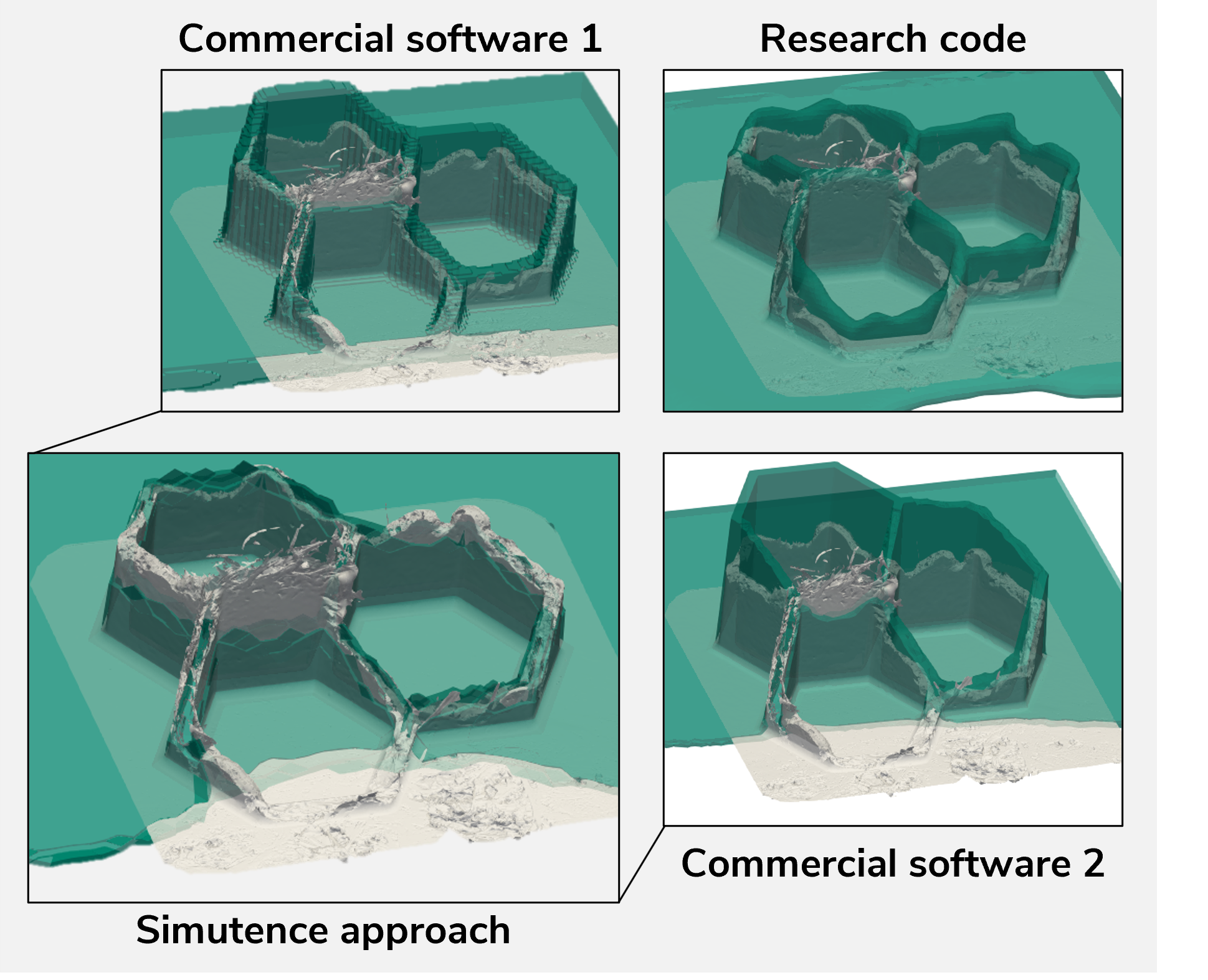Introduction
There are a variety of different approaches to SMC molding simulation. In a collaboration project with Volkswagen (VW) and the Karlsruhe Institute of Technology (KIT), different molding simulation tools have been benchmarked for a honeycomb structure. Based on this, the prediction accuracy for the press force and the filling pattern was validated against experimental tests.
Four different approaches are considered for the benchmark. First, a mesoscopic research code approach is considered. Second, two commercial approaches and software are considered. Finally, the Simutence in-mold material card creation approach is adopted. This approach uses Moldflow and built-in techniques for material modeling.
More details can be found here.





